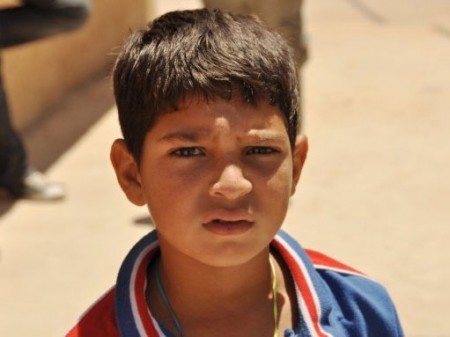
King Abdullah’s post-election euphoria disguises the enduring challenge of youth political participation in Jordan. The country’s western allies have adopted a similar relaxed posture towards the palace-led reforms. Yet the state’s continued claims of “reform success” neglect the sentiment of the country’s unsettled youth. Representing more than half the population and the bulk of the unemployed, unrest among Jordanian youth-–particularly tribal elements-continues to fester. Impending austerity measures set against these social pressures present a critical juncture for the state.
Jordan’s recent elections ushered into power various tribal coalitions and independent businessmen, groups considered loyal to King Abdullah II and likely to resist substantive reform. While the level of youth participation–and active boycott–is unknown, skepticism towards state-led reform abounds among many young Jordanians. Instead, concerns about their own economic livelihood remain a top focus.
The country’s myriad economic challenges underscore these concerns. Similar to other Middle East states, Jordan’s official youth unemployment rate hovers around 30 percent, more than double the national rate of 12 percent. However, unofficial estimates place both numbers much higher. In addition, Jordan’s weak economy and tribal patronage system have encouraged an acutely bloated public sector, even by regional standards. The IMF estimates the public sector accounts for 35 percent of total employment in Jordan–on par with Egypt, a country nearly 14 times its population size. Jordan’s unemployment rate also continues to rise as fewer young Jordanians are able to find jobs in the Gulf. Its aid-dependent budget and ongoing energy crisis create regular annual deficits.
Last year, Jordan’s budget deficit soared to $4 billion. To offset the funding gap, the government requested IMF assistance in the form of a $2 billion loan. The loan was approved, but tied funding to strict “fiscal consolidation” measures. The outlined austerity program mandates deep cuts to fuel subsidies and the public sector, and introduces price increases to other energy-related commodities. Last November’s fuel price hikes, which ignited violent country-wide protests, were only one of several scheduled increases. Electricity price hikes are slated to take place in the near future.
Human Rights Watch reports continually note the youth presence at demonstrations. This subtext is particularly true with disaffected East Banker tribal elements. Last year’s most violent anti-government protests took place in tribal areas, traditionally known for their loyalty to the monarch. At the forefront of these demonstrations are economically frustrated East Banker youth. With a traditional reliance on the state for employment, the state’s fiscal “tightening” threatens their economic subsistence. Privatization has also cut into their employment prospects. The introduction of greater austerity measures may prove to be a “red line” for this aggrieved demographic.
Perceptions of widespread corruption unite broader social factions and further aggravate these frustrations. Last year’s International Republican Institute poll cited corruption as the top concern among Jordanians. Also notable, Transparency International highlights in its 2012 corruption index Jordan’s continued slip. More distinctly, young Jordanians also perceive corruption among their own tribal leaders. This social dynamic may have significant implications in the future. Tribal leaders express having less control over their young ranks, with youth movements chanting sharper criticisms of the monarch than their elders.
These serious sociological and demographic issues prompt real concern for the stability of the Kingdom. Beyond electoral “success” or royal rhetoric of “reform”, the reality brewing among Jordan’s younger stratum reflects a troubling trend towards unrest and wider instability. Markedly, the state’s ambitious corrective actions–cutting the deficit by a third–constitute a difficult policy trade-off, pitting grievous austerity measures against potentially disenfranchised youth.
Que Newbill is a Scoville Fellow and Research Analyst with the Middle East Program at The Stimson Center, based in Washington D.C. He has lived in Jordan and worked at the Center for Strategic Studies based in Amman. Find him on Twitter @DuboisThinker.
For additional reading on this topic please see:
The Elections in Jordan: People Want Evolution, Not Revolution
Youth as a Seismograph for Societal Problems
Youth Integration and Job Creation in the Middle East and North African Region
For more information on issues and events that shape our world please visit the ISN’s featured dossiers and Security Watch.

